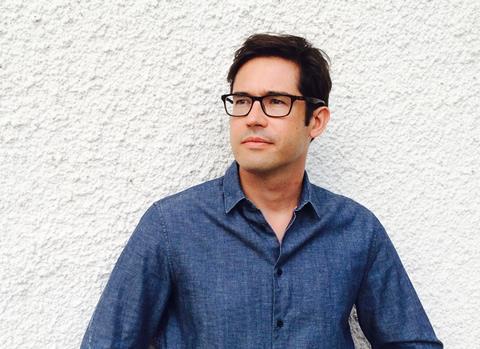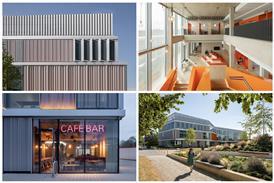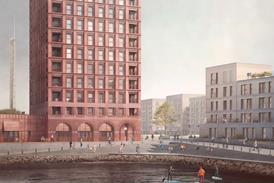It might already be time for the profession to focus less on sustainability and more on climate change adaptation, warns Ben Flatman

In her seminal 1962 book, Silent Spring, Rachel Carson drew ground-breaking links between the industrialised use of pesticides, declining biodiversity and a range of human health problems. It helped kick-start the modern environmental movement and although her ideas are now widely accepted as scientific fact, destruction of our planetary ecosystems has only accelerated in the intervening decades.
From my own home in Uganda, it has been shocking to witness some of the last vestiges of this country’s once famed wilderness disappearing before my eyes. Within the last year I’ve seen huge roads driven into one of Uganda’s few significant wildlife sanctuaries at Murchison to facilitate oil exploration. Where until as recently as the 1980s leopards and other large cats were still commonplace close to the centre of Kampala, the city now sprawls endlessly into the surrounding countryside and the big mammals are gone. The hundreds of species of fish that could be found in Lake Victoria up until the 1960s have been reduced to just two. Meanwhile, air quality in ever-growing Kampala is reported to be reaching levels normally only found in India’s big cities.
Against this kind of catastrophic decline, Europe may seem like a relative outlier in terms of the global league table of environmental degradation. After all, we felled our great forests in the middle ages and wiped out most of the bears and wolves centuries ago. It is often argued that the developing world is therefore simply “catching up” with the developed economies of the west, and that the current massive loss of habitat and species at a global level is the unavoidable price of “human development”. It is difficult to counter this argument, other than by pointing out that it is often the poorest who bear the brunt of the associated pollution that contaminates their air, food and water.
But even European countries with relatively strict environmental protections are also seeing declines in biodiversity on a disturbing scale. Urbanisation, intensive farming and global warming are all driving the change. A recent report suggested that the quantity of flying insects had declined by 76% in Germany over a 27-year period, with as-yet unknown consequences for the wider environment, including plant species dependent on insects for pollination. This is not gradual decline, but a possible sign of the imminent collapse of whole ecosystems. The growing body of evidence from across the world is that Rachel Carson’s Silent Spring has arrived with a vengeance.
The architectural profession seems to have had a hard time accepting its critical role in this unfolding crisis. Although there was a widespread interest in sustainable and eco-friendly construction technologies in the 70s and 80s, this seemed to dwindle around the turn of the millennium. Perhaps this was due to the rise to dominance of a generation of influential architects who’d grown up amid the heady mix of futuristic technology and disposable consumerism encapsulated in the pop culture of the post-war years. And despite recent renewed interest in sustainability (and award-winning projects like Fosters’ Bloomberg building) it often seems that there is still a hard-to-shift attitude among “avant-garde” influencers that asking architects to embrace their environmental responsibilities is just a tedious drag on creativity.
Architects need to begin focusing less on sustainability and more on climate change adaptation – such as “creating ‘climate refuges’ for people and species”
Susan Roaf
The scale of the environmental calamity, and architects’ responsibility to do something about it, is however now gradually being acknowledged. The RIBA recently declared an environmental and climate change emergency, with Ben Derbyshire stating that, “The climate emergency is the biggest challenge facing our planet and our profession.” But as the RIBA’s statement acknowledges, the key proof of success for architects will be turning “warm words into impactful actions”.
Critics might be forgiven for wondering whether this is isn’t a little too late in the day. According to one of the UK’s leading architectural experts on sustainability, Professor Susan Roaf, we are now well beyond the point of preventing catastrophic change in our ecosystems. She recently told me that architects need to begin focusing less on sustainability and more on climate change adaptation – such as “creating ‘climate refuges’ for people and species”.
Roaf points to the 2003 heatwave in southern Europe that contributed to the deaths of 52,000 people, and how this scenario is predicted to occur every two years by 2050. For those seeking respite through more mechanical cooling, she points out that expelled hot air from modern air conditioning systems has massively contributed to the problem of extreme temperatures in cities across the world. She also highlights how the extensive use of glass cladding systems has also contributed to rising temperatures in cities due to massive heat reflection into the surrounding urban environment – which is one of the reasons that New York’s mayor recently discussed banning glass skyscrapers.
>> Also read: RIBA declares climate emergency
>> Also read: We must start making decisions about construction’s role in climate change
With the built environment accounting for so much of global carbon emissions through both construction processes and whole-life energy costs, it is unavoidable that architects are finding themselves on the frontline of the environmental crisis facing the planet.
Architects can choose to embrace their responsibilities or drift into professional and moral irrelevance. The issues need to be seen at not just the level of individual buildings, but in terms of how whole city and regional ecologies function. This requires that architects regain the confidence and skills that once made them leaders in terms of social and system-level change. Many of course are, like Grimshaw, already taking up the challenge. It’s essential the rest of us follow.
















3 Readers' comments